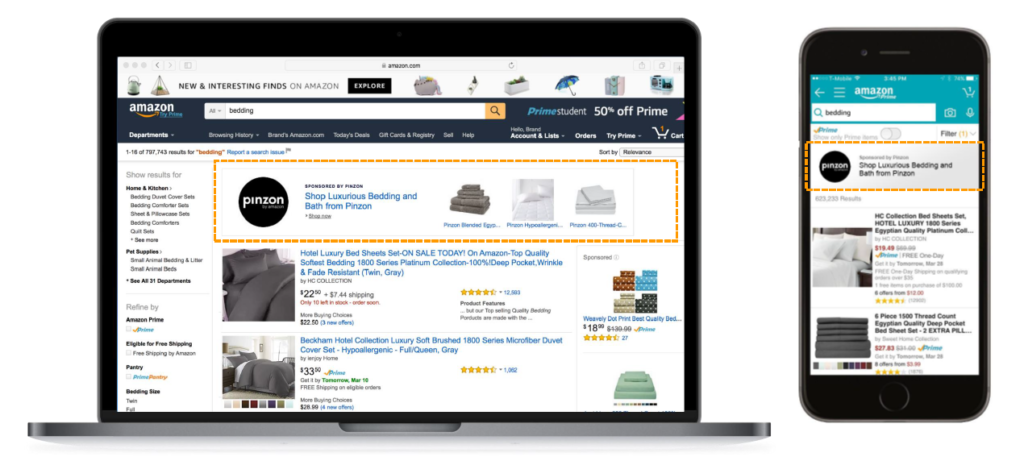Amazon Seller Central: Comprehensive Guide to Optimizing Your Store
Amazon Seller Central is the gateway to growing your business on the world’s largest online marketplace. As a platform that allows third-party sellers to list and sell products directly to Amazon customers, mastering Amazon Seller Central is essential for maximizing your sales potential. In this guide, we’ll dive into best practices, tips, and strategies for optimizing your Amazon Seller Central account, helping you stay competitive and grow your business.
What is Amazon Seller Central?
Amazon Seller Central is the platform where third-party sellers manage their Amazon sales. It gives sellers access to Amazon’s vast customer base, offering tools for listing products, managing inventory, fulfilling orders, and analyzing performance data. With millions of active users, Amazon provides an unparalleled opportunity to scale your e-commerce business.
The keyword “Amazon Seller Central” plays a critical role in your journey to success on the platform. By incorporating SEO techniques into your store’s product listings, descriptions, and content, you can significantly improve your store’s visibility.

Setting Up Your Amazon Seller Central Account
Setting up your Amazon Seller Central account is the first step in selling on Amazon. The process is straightforward:
- Create an Account – Register for an Amazon Seller account. Choose between an Individual or Professional plan, depending on your sales volume. A Professional plan is best if you plan to sell more than 40 items per month.
- Business Information – Enter your business information, including bank account details, tax information, and your store name. Make sure to provide accurate and up-to-date information.
- Listing Your Products – Once your account is set up, you can start listing products. You’ll need to provide detailed descriptions, images, and pricing. Make sure to use relevant keywords like “Amazon Seller Central” to improve search rankings.
Optimizing Product Listings for SEO
Optimizing your product listings for SEO is crucial to increasing visibility and sales. Here are some essential SEO strategies:
- Keyword Research – Conduct thorough keyword research to identify high-volume, relevant keywords that your customers are searching for. Use tools like Amazon Keyword Tool and Google Keyword Planner to find top-ranking terms related to your products.
- Title Optimization – Use relevant keywords in your product titles. For example, if you’re selling kitchen appliances, use keywords like “best kitchen appliances on Amazon Seller Central” to improve search rankings.
- Bullet Points and Descriptions – Incorporate keywords naturally into your product descriptions and bullet points. Highlight key features, benefits, and uses of the product while using SEO-friendly terms.
- Backend Keywords – Don’t forget about backend keywords. These hidden keywords help Amazon’s algorithm better understand your product without cluttering your listing.
- High-Quality Images – Optimize your images by using high-resolution pictures with multiple views of the product. Amazon’s algorithm favors listings with quality visuals, as they tend to drive more engagement and conversions.
Fulfillment by Amazon (FBA) vs. Fulfillment by Merchant (FBM)
As a seller on Amazon Seller Central, you have two fulfillment options: Fulfillment by Amazon (FBA) and Fulfillment by Merchant (FBM). Choosing the right one depends on your business needs.
- FBA – Amazon handles the storage, shipping, and customer service for your products. While FBA offers Prime eligibility and faster shipping, it comes with storage and fulfillment fees.
- FBM – You manage your own shipping and fulfillment. FBM can be cost-effective for low-volume sellers or those with specialized shipping needs.
Using FBA can improve your product’s chances of being featured in the Buy Box, which is a highly coveted spot on Amazon.
Managing Inventory in Amazon Seller Central
Proper inventory management is key to maintaining smooth operations and avoiding stockouts. Use Amazon’s inventory management tools to track stock levels, set up alerts, and replenish inventory on time.
- Stock Replenishment – Make use of the Restock Inventory feature to get insights on when to reorder products. Avoid overstocking or understocking by maintaining accurate records.
- Inventory Performance Index (IPI) – Your IPI score measures your inventory efficiency. Higher scores mean better inventory management, leading to lower storage fees and better fulfillment options. Learn more by exploring the Amazon Inventory Management.
Advertising on Amazon Seller Central
Amazon advertising has tools provide a powerful way to increase product visibility and drive sales. Here are the key ad formats you can use:
- Sponsored Products – These ads appear in search results and product detail pages. They allow you to promote individual listings and drive more traffic to your products.
- Sponsored Brands – Sponsored Brands feature your brand logo and multiple products. This format is great for building brand awareness and showcasing a range of products.
- Sponsored Display – This option lets you retarget customers who have viewed your products or similar items, increasing the chances of conversion.
By leveraging Amazon’s Pay-Per-Click (PPC) ads, you can optimize your ad spend and maximize your return on investment (ROI).

Monitoring Performance with Amazon Seller Central Analytics
Analytics are vital to understanding your store’s performance. Amazon Seller Central provides powerful reporting tools to track key metrics such as:
- Sales Reports – Monitor daily, weekly, or monthly sales trends to track your store’s performance.
- Advertising Reports – Analyze the effectiveness of your ad campaigns by tracking impressions, click-through rates (CTR), and conversion rates.
- Inventory Reports – Use inventory reports to identify slow-moving stock and take steps to boost sales.
- Customer Feedback – Pay attention to customer reviews and feedback. Positive reviews can improve your store’s ranking and attract more buyers.
Regularly analyzing your store’s data will help you make informed decisions about your product offerings, pricing strategies, and advertising campaigns.
Best Practices for Amazon Seller Central
To succeed on Amazon Seller Central, follow these best practices:
- Stay Competitive – Regularly monitor your competitors’ prices and offerings to ensure you remain competitive.
- Use A+ Content – Create A+ Content for Amazon to enhance your product detail pages with rich media like images, videos, and comparison charts.
- Monitor Your Metrics – Continuously track and optimize your performance metrics, including conversion rates, page views, and ad effectiveness.
- Respond to Customer Queries – Address customer questions and concerns promptly to build trust and credibility.
Common Mistakes to Avoid
Avoid these common pitfalls when managing your Amazon Seller Central account:
- Ignoring SEO – Not optimizing your listings for search engines can lead to lower visibility and missed sales opportunities.
- Overstocking or Understocking – Poor inventory management can result in stockouts or excess inventory, both of which can harm your sales and reputation.
- Not Monitoring Reviews – Failing to address negative reviews can damage your brand’s credibility.
Conclusion
Amazon Seller Central is a powerful platform for third-party sellers looking to expand their reach and grow their business. By implementing SEO best practices, optimizing your product listings, using effective advertising strategies, and staying on top of analytics, you can maximize your success. Mastering these tools will help you stay competitive and increase your sales in the ever-evolving world of e-commerce.
By focusing on best practices and avoiding common mistakes, you’ll be well-equipped to succeed on Amazon’s platform with Search Engine Markets.

